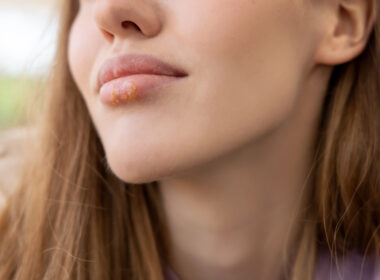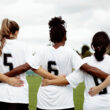After the United States Women’s National soccer team won the 2019 World Cup, coach Dawn Scott discussed a key strategy that helped lead her team to victory. It wasn’t specific practice plays or a special diet. It was the simple action of tracking her players’ cycles. She had begun to notice that her players needed longer recovery times and felt more fatigued around the beginning of their periods. As a result, she decided to take a more tailored approach to workouts and nutrition based on their cycle phases. Plans were individually curated for each player, and Scott believes that their cycle-based system ultimately helped them win the World Cup.
Scott’s idea for the US Women’s National team reveals a truth that is often forgotten in modern sports: women’s bodies are inherently different from men’s bodies. Author and award-winning runner Lauren Fleshman recently wrote an article for TIME Magazine discussing why she believes sports were never designed for the female body. In this article, I’ll engage Fleshman’s arguments, the research surrounding sports and the female body, and weigh in on whether birth control (or US Women’s National team-style cycle tracking) might be an answer for some of the issues female athletes face.
TIME Magazine: Sports weren’t designed for the female body because they require female athletes to “fight their body’s natural development”
In her TIME article, Fleshman describes how adolescent girls experience a temporary dip in their athletic performance when they begin puberty. This occurs because their bodies shift energy towards sexual development during this crucial period. Adolescent boys do not experience this same dip, and also do not have the natural “softness” that a girl going through puberty can expect to develop.
Fleshman’s main focus is the long-term health effects of treating women like men in the sports arena, expecting their bodies to be on the same steady trajectory that is typical of male athletes. Her concerns, especially about RED-S and eating disorders, are valid ones that have the potential to affect a woman well into her later years if she gets osteoporosis or similar bone issues as she ages [1].
Unrealistic body fat percentage goals
These differences lead many girls in athletics to think that they must have the body fat percentages of a boy. Fleshman observes that some coaches share this view. In fact, the majority of young female athletes say they are dissatisfied with their weight, with 90% of these girls believing they are overweight by an average of 13.6 pounds. This toxic mindset has led 35% of female collegiate athletes to be at risk for anorexia [2]. Nearly double that figure are at risk for bulimia [2].
RED-S
Having an unrealistic expectation of weight leads many girls (and women) to under-eat. This in turn causes RED-S (relative energy deficiency in sport). RED-S is defined as decreasing levels of health and athletic performance when an athlete is not properly nourished and energized by the food he or she is consuming. 80% of female athletes who were screened for RED-S had at least one symptom, with many of these women experiencing the loss of their periods [3].
According to Fleshman, menstrual dysfunction is so common in sports that many coaches and professionals in the sports world see it as “a ‘normal’ response to training despite an abundance of research demonstrating that a healthy hormonal cycle is absolutely essential”.
Lasting bone mineral density deficits
Fleshman goes on to describe how losing one’s cycle can cause low bone mineral density for women, especially if the menstrual dysfunction happens during the teenage years [4]. Female college athletes are subject to two or three times the amount of stress fractures of their male peers, and that rate only increases if they have RED-S. And lest anyone believe these issues can simply be resolved after a young woman ceases training competitively, in reality, bone mineral density issues and bone fractures can follow a woman for the rest of her life, even when she is no longer playing sports competitively [1].
The bottom line on whether sports were designed for the female body
While modern sports were arguably not developed with the adolescent female body in mind, Fleshman didn’t call for the end of female sports. In Part II, I cover her recommendations for how sports can respect the female body and add a few additional insights. And, yes, one of the pillars to the U.S. Women’s national soccer team’s success is part of the solution.
References:
[1 MacKnight, John M. “Osteopenia and Osteoporosis in Female Athletes.” Clinics in sports medicine vol. 36,4 (2017): 687-702. doi:10.1016/j.csm.2017.05.006 [2] Greenleaf, Christy et al. “Female collegiate athletes: prevalence of eating disorders and disordered eating behaviors.” Journal of American college health : J of ACH vol. 57,5 (2009): 489-95. doi:10.3200/JACH.57.5.489-496 [3] Dave, Sona C, and Martin Fisher. “Relative energy deficiency in sport (RED – S).” Current problems in pediatric and adolescent health care vol. 52,8 (2022): 101242. doi:10.1016/j.cppeds.2022.101242 [4] Skorseth P, Segovia N, Hastings K, Kraus E. Prevalence of Female Athlete Triad Risk Factors and Iron Supplementation Among High School Distance Runners: Results From a Triad Risk Screening Tool. Orthop J Sports Med. 2020 Oct 27;8(10):2325967120959725. doi: 10.1177/2325967120959725. PMID: 33195716; PMCID: PMC7605010.Additional Reading:
Cycle Syncing: How to hack the natural hormonal shifts of your menstrual cycle







